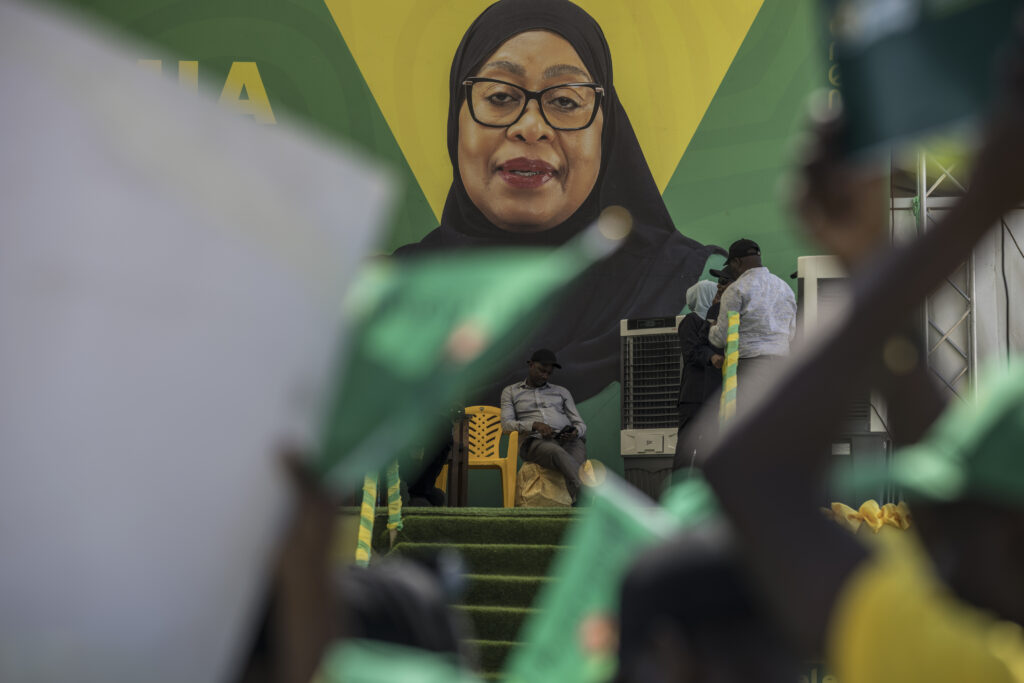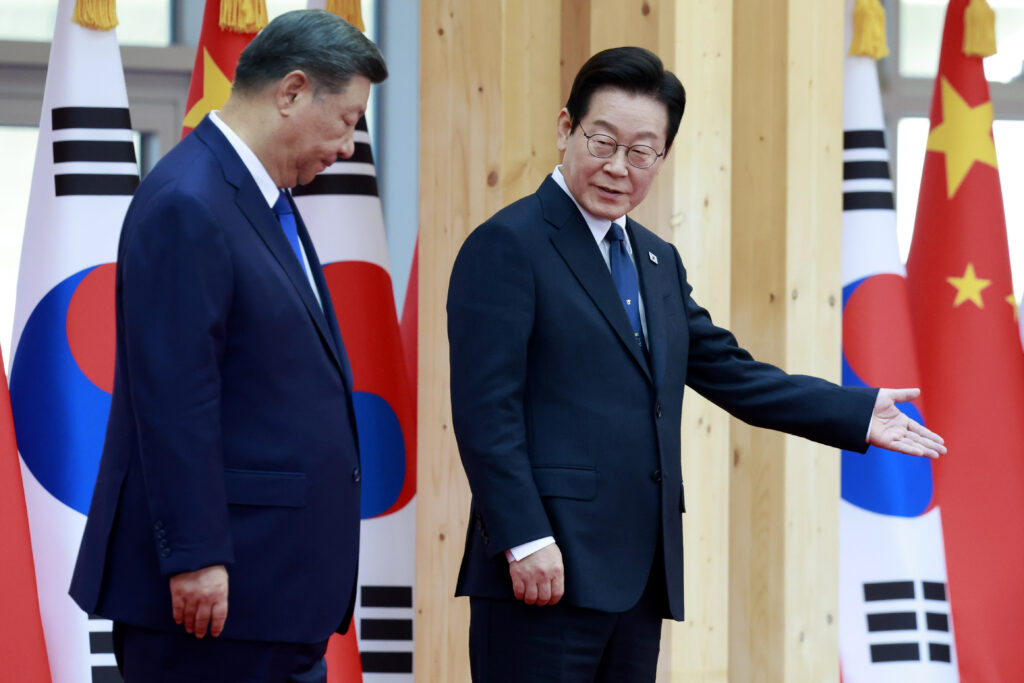Italie: terminus après onze mois pour Vieira au Genoa
Onze mois après son arrivée en Italie, Patrick Vieira n’est plus depuis ce samedi l’entraîneur du Genoa, nouvel échec dans une reconversion qui n’est pas à la hauteur de sa carrière de joueur.C’est un (petit) coup de théâtre comme en raffole la Serie A: alors qu’il avait été confirmé dans ses fonctions la veille, Vieira, 49 ans, a finalement quitté son poste samedi matin.”Le Genoa annonce que Patrick Vieira n’est plus en charge de son équipe première”, a indiqué dans un bref communiqué le Genoa, 20e et dernier du Championnat d’Italie.Avant les traditionnels et convenus mots de remerciement: “Le club souhaite remercier l’entraîneur et son staff pour leur sérieux et professionnalisme et leur souhaite le meilleur pour la suite de leur carrière”.Selon la presse italienne, le technicien français aurait dit stop de lui-même après une nuit de réflexion, mais son départ, qu’il l’ait souhaité ou que le club ne lui ait pas laissé le choix, n’est pas une surprise.Depuis le coup d’envoi de la saison, son équipe n’a empoché que trois points en neuf matches (trois nuls et six défaites), soit le plus mauvais début d’exercice de l’histoire du Genoa, doyen des clubs italiens.La défaite mercredi à domicile contre la Cremonese (2-0) a été le coup de grâce tant l’équipe a semblé dépassée par le promu.- Balotelli exulte -Même le propriétaire et président roumain du Genoa, Dan Sucu, qui avait pourtant fait part de sa “totale confiance” en Vieira en début de semaine, a perdu foi dans le champion du monde 1998 et champion d’Europe 2000.Le départ de Vieira a été salué par Mario Balotelli, l’ancien international italien qui a passé une partie de la saison dernière au Genoa, sans que Vieira ne fasse appel à lui.”Le karma est une garce (…). Maintenant, le club peut se concentrer sur des personnes qui l’aiment vraiment, et non sur celles qui ont profité égoïstement du travail des autres”, a-t-il écrit sur ses réseaux sociaux.En attendant l’arrivée d’un nouvel entraîneur, qui pourrait être Daniele De Rossi, le Genoa sera dirigé lundi contre Sassuolo par Roberto Murgita et Mimmo Criscito, ancien joueur emblématique du club, actuellement à la tête des moins de 17 ans.Si le Genoa n’accuse que deux points de retard sur la 17e place, synonyme de maintien et peut encore espérer se sauver, Vieira peut-il encore éviter l’étiquette peu flatteuse d’entraîneur surcoté et profitant à plein de ses succès comme joueur, loin du palmarès de certains de ses anciens coéquipiers en Bleu comme Didier Deschamps ou Zinédine Zidane?- 1,14 point par match -Pour son retour en Italie, où il a joué sous le maillot de l’AC Milan (1995-96), de la Juventus Turin (2005-06) et de l’Inter Milan (2006-10), “Pat” a d’abord convaincu par son pragmatisme qui a permis au “Griffon”, 17e à son arrivée en novembre, d’assurer son maintien avec une 13e place finale.Ce qui lui a valu en juin de signer une prolongation de contrat de deux ans, jusqu’en 2027.Mais, depuis août, après un mercato minimaliste (0,5 million d’euros dépensés), le Genoa manque d’inspiration et de réalisme offensif.Le bilan de Vieira à la tête du club, avec une moyenne de 1,14 points, est son plus mauvais depuis ses débuts d’entraîneur au New York City FC dans le Championnat nord-américain (MLS), entre 2015 et 2018.Ses statistiques comme entraîneur ne décollent pas avec 120 victoires, 88 nuls et 120 défaites.Ses passages par la Ligue 1, à Nice (2018-20) et Strasbourg (2023-24), puis par le Championnat d’Angleterre (Crystal Palace, 2021-23) où sa cote était au plus haut en raison de son glorieux passé de joueur d’Arsenal, ont laissé un goût d’inachevé et d’amertume.Il est le deuxième entraîneur à perdre son poste en Serie A cette saison, après Igor Tudor à la Juventus Turin.
China to exempt some Nexperia chips from export ban
China said on Saturday it will exempt some Nexperia chips from an export ban that was imposed over a row with Dutch officials and has alarmed European businesses.Anxiety over chip shortages began when the Netherlands invoked a Cold War-era law in late September to effectively take control of Nexperia, whose parent company Wingtech is backed by the Chinese government.China, in response, banned any re-exports of Nexperia chips to Europe and accused the United States of meddling in Dutch legal procedures to remove Nexperia’s Chinese CEO.Beijing blamed what it said on Saturday was “the Dutch government’s improper intervention in the internal affairs of enterprises” for leading to “the current chaos in the global supply chain”.”We will comprehensively consider the actual situation of enterprises and grant exemptions to exports that meet the criteria,” a Chinese commerce ministry spokesperson said in a statement, without offering specifics.The resumption of some Nexperia shipments was part of a trade deal agreed by Chinese President Xi Jinping and his US counterpart Donald Trump after talks in South Korea on Thursday, the Wall Street Journal reported, citing unidentified sources.Chinese and European Union officials were also to discuss Nexperia while meeting in Brussels, EU spokesman Olof Gill had said.Those talks on Friday were “a welcome opportunity for both sides to update on… the introduction and implementation of export controls”, Gill said in a statement on Saturday.The discussions covered “controls on rare earth elements introduced or proposed by China, as well as an update on controls and developments on the EU side”, he said.The statement did not mention Nexperia specifically.Separately, Berlin welcomed Beijing’s move as a “positive sign” on Saturday.”The latest reports from China are positive initial signs of an easing of tensions,” an economy ministry spokesman told AFP.He stressed that “a final assessment” of the implications of Beijing’s announcement was not yet possible.- Automaker anxiety -Nexperia produces relatively simple technologies such as diodes, voltage regulators and transistors that are nonetheless crucial as vehicles increasingly rely on electronics.Its chips are mainly found in cars but also in a wide range of industrial components, as well as consumer and mobile electronics such as refrigerators.The company makes them in Europe before sending them to China for finishing and then re-exporting them back to European clients.European carmakers and parts suppliers had warned of shortages of chips supplied by Nexperia that would force stoppages at production lines in Europe.The chipmaker supplies 49 percent of the electronic components used in the European automotive industry, according to German financial daily Handelsblatt.The European auto lobby ACEA warned last month that production would be seriously hit.Nexperia’s chips, while widely used, are not “unique” in terms of technology and therefore “easily substitutable”, French parts maker OPmobility said.However, suppliers must get the new products approved by automakers, which takes time.Beijing suggested on Saturday that some shipments would resume.Companies experiencing difficulties could contact the commerce ministry or local authorities, the Chinese spokesperson said.
Présidentielle au Cameroun: à Douala, des familles endeuillées par les violences post-électorales
Sous un ciel gris, la cour d’une maison familiale du 3ème arrondissement de Douala s’est mué en lieu de recueillement: Achille Simo, 45 ans et père de cinq enfants, a été tué mercredi par balles en marge des violences qui secouent le Cameroun depuis la réélection contestée de Paul Biya.Des proches de la famille sont venus apporter leur soutien à Elodie Fougué, désormais veuve de 39 ans, qui reçoit les condoléances en silence. Depuis lundi et la réélection pour un huitième mandat de Paul Biya, 92 ans et au pouvoir depuis 1982 au Cameroun, les grandes villes du pays ont été secouées par des manifestations à l’appel du candidat autoproclamé victorieux Issa Tchiroma, mais réprimées dans le sang par le régime. Achille Simo a été tué par balles mercredi alors qu’il se rendait dans une échoppe du quartier, selon des témoins.”Le militaire lui a demandé de dégager de la route. Achille a répondu : +Faites votre travail, nous ne vous dérangeons pas+. Le capitaine a tiré à bout portant alors qu’il avait le dos tourné”, raconte Basile Njeumeni Nana, son voisin de 40 ans. “Comment peut-on abattre un civil qui ne représentait aucun danger ? Son seul tort a été de sortir pour chercher à manger pour sa famille”, interroge le frère cadet de la victime, Christian Fokam. “Il ne manifestait même pas”. Non loin de l’endroit du tir, des habitants montrent des taches de sang encore visibles sur la chaussée malgré les récentes pluies. “Depuis, le quartier vit dans la peur”, raconte un voisin. Des militaires en patrouille passent sans un mot.Le gouverneur de la région du Littoral a déploré quatre morts dimanche à Douala en marge d’une manifestation organisée la veille de la proclamation des résultats. Le gouvernement camerounais a admis mardi “des morts” dans les troubles post-électoraux sans toutefois préciser le nombre, lieu ou dates des décès.Il y a “des centaines de morts et de blessés” selon un décompte du candidat Issa Tchiroma Bakary vendredi. Cet ancien ministre passé à l’opposition a crée un engouement inattendu chez les jeunes avides de changement. Il revendique la victoire à l’élection et a appelé à plusieurs reprises les Camerounais à sortir pour défendre sa victoire. – “Opération ville morte”À quelques rues de là, dans le quartier Newbell du 2ème arrondissement de Douala, une autre maison porte le deuil. Les portes sont closes : la famille est partie enterrer Mohamed Pouamou, un chauffeur de 22 ans, victime collatérale d’une manifestation dimanche, selon ses proches. Devant le portail, un groupe de jeunes discute à voix basse. “Il était assis, regardait un match dans une salle de projection. Une balle venue de nulle part l’a touché en pleine tête”, affirme Idriss Fifen, mécanicien de 29 ans, qui dit avoir vu la scène. Plusieurs villes ont été secouées par des manifestations sporadiques et limitées – quelques centaines de jeunes au maximum depuis l’annonce des résulats de l’élection. À Douala ou encore à Garoua, fief de Tchiroma dans le nord du Cameroun, des affrontements ont opposé manifestants et forces de sécurité. Des témoins affirment que des tirs ont été effectués à balles réelles dans certains quartiers.Paul Atanga Nji, ministre de l’Administration territoriale, a reconnu “des pertes en vie humaine” dans les affrontements et déploré “plusieurs édifices publics, commerces et bien privés”, “incendiés, saccagés et pillés”, à travers le pays. “Des scènes de pillages et de vandalisme”, ont notamment eu lieu à Douala, la capitale économique, a assuré le ministre.Depuis ces incidents, la ville tente de retrouver un semblant de normalité. Certaines boutiques ont rouvert, mais la tension et la peur restent perceptibles. Issa Tchiroma Bakary, qui était reclus à son domicile de Garoua depuis la proclamation des résultat, a assuré vendredi être sous la “protection” d’une partie de l’armée et a appelé à le soutenir via des “opérations ville morte” de lundi à mercredi. “Gardons nos commerces fermés, suspendons nos activités, restons chez nous, en silence, pour montrer notre solidarité et rappeler à ce régime que la force d’une économie, c’est son peuple — et ce peuple ne le reconnaît plus comme son leader”, a-t-il détaillé. Dans plusieurs quartiers de Douala, des habitants disent faire des provisions en prévision de ces journées. L’Union européenne et l’Union Africaine ont déploré la violence de la répression du régime. Le Haut-Commissariat de l’ONU aux droits de l’homme a appelé à l’ouverture d’une enquête.
Tanzanie: la présidente proclamée gagnante après trois jours de violences
En Tanzanie, la cheffe de l’Etat sortante Samia Suluhu Hassan a été proclamée samedi vainqueur de la présidentielle avec près de 98% des voix, après trois jours de violences électorales dans lesquelles des centaines de personnes ont été tuées selon l’opposition. Le pays d’Afrique de l’Est a sombré dans la violence mercredi, jour d’élections présidentielle et législatives qui se sont déroulées sans opposition, les deux principaux adversaires de la cheffe de l’État ayant été soit emprisonné, soit disqualifié.Mme Hassan a remporté plus de 97,66% des voix, soit 31,9 millions de voix sur 32,7 millions recensées, selon la commission électorale, avec un taux de participation estimé à près de 87%, contrastant avec la faible affluence aux bureaux de vote constatée par l’AFP et d’autres observateurs. “C’est impossible”, a estimé auprès de l’AFP un porte-parole du principal parti d’opposition, Chadema, John Kitoka. “Personne ne s’est rendu aux urnes pour voter, c’est tout simplement ridicule.”Chadema a été exclu des élections et avait appelé au boycott du scrutin. Son chef Tundu Lissu, arrêté en avril, est jugé pour trahison, une accusation passible de la peine capitale. Qualifiant la victoire écrasante de Mme Hassan de “parodie de démocratie”, M. Kitoka a indiqué que les observateurs du parti ont signalé qu'”au moins 800 personnes” avaient été tuées par les forces de l’ordre lors des manifestations contre le pouvoir cette semaine.Le jour du scrutin, l’AFP a entendu des tirs nourris alors que des centaines de personnes protestaient, incendiant notamment un commissariat. La contestation s’est étendue dans le pays et s’est poursuivie jusqu’à vendredi.Une cérémonie d’investiture va suivre dès samedi, a précisé la télévision d’Etat, selon des informations transmises par un journaliste de l’AFP par téléphone en raison de la coupure d’internet en vigueur dans le pays de 68 millions d’habitants. Samia Suluhu Hassan a été promue à la tête de la Tanzanie à la mort de son prédécesseur John Magufuli en 2021. Saluée dans un premier temps pour avoir assoupli les restrictions instaurées par son prédécesseur, elle a été accusée ensuite de mener une répression sévère contre ses détracteurs, notamment en amont du scrutin.Alors qu’elle ne s’était jusqu’ici pas encore exprimée sur les violences, la présidente sortante a déclaré samedi que son gouvernement “condamne fermement” les manifestations. “Nous remercions les forces de sécurité d’avoir veillé à ce que les violences n’empêchent pas le vote (…) Ces actes n’ont rien de patriotique”, a-t-elle ajouté lors d’une cérémonie retransmise à la télévision d’Etat. – “Centaines de morts” -Vendredi M. Kitoka avait estimé auprès de l’AFP que les violences électorales ont fait “environ 700 morts”, à partir d’informations récoltées par des membres qui font le tour des hôpitaux du pays. Un bilan qualifié de “plutôt crédible” par une source diplomatique, qui a fait état de “centaines de morts”. Une source sécuritaire interrogée par l’AFP a reçu des informations similaires. Mais ces bilans ont été démentis par les autorités.”Il n’y a eu aucun usage excessif de la force”, a réagi vendredi le ministre tanzanien des Affaires étrangères Mahmoud Thabit Kombo sur la chaîne Al-Jazeera, faisant état de “poches de violence” dans le pays. “Je n’ai pas vu ces 700 morts”.Plusieurs hôpitaux et centres de santé ont refusé de répondre aux questions de l’AFP. Le secrétaire général de l’ONU Antonio Guterres a réclamé vendredi dans un communiqué une “enquête minutieuse et impartiale sur les accusations d’utilisation excessive de la force”.- Perturbations -Les violences suscitent d’importantes perturbations. Le port de Dar es Salaam, l’un des plus importants du continent, était fermé vendredi, selon des informations du site de suivi Vessel Finder et de la société néerlandaise de transport maritime Steinweg. Des magasins manquent de nourriture, les stations-service ont cessé de fonctionner. Un résident a indiqué que les prix de la viande et du poisson ont doublé, voire triplé, et les transports publics sont à l’arrêt.”Je dors à la mosquée depuis mercredi, quand les violences ont éclaté”, raconte à l’AFP Mohamed Rajab, 52 ans, habitant de Dar es Salaam. “Il n’y a pas de transports. Je ne sais pas quand je rentrerai chez moi.”
Gaza: nouveau déboire sur les dépouilles d’otages, frappes israéliennes
Le processus de restitution des dépouilles d’otages enlevés en Israël le 7 octobre 2023 a connu un nouveau déboire samedi avec la remise de trois corps par le Hamas qui ne sont pas ceux d’otages.Selon une source sécuritaire à Gaza, des tirs de l’armée israélienne et des frappes aériennes ont été entendus samedi autour de Khan Younès (sud).Au moment de la remise vendredi soir de trois corps non identifiés en provenance de Gaza via la Croix-Rouge, une source militaire israélienne avait indiqué qu’elle ne pensait pas qu’il s’agissait de ceux d’otages.Un laboratoire de recherche médico-légale a confirmé que les dépouilles n’étaient pas celles d’otages, a indiqué samedi à l’AFP un porte-parole de l’armée israélienne.Samedi, les Brigades Ezzedine al-Qassam, branche armée du Hamas, ont expliqué dans un communiqué avoir “proposé de remettre (à Israël) trois échantillons provenant d’un certain nombre de restes non identifiés. Cependant, l’ennemi a refusé d’accepter les échantillons et a exigé les corps pour examen. Nous les avons remis afin de prévenir toute revendication de l’ennemi”.-Enième péripétie-Cette énième péripétie depuis le cessez-le-feu en vigueur depuis le 10 octobre entre le Hamas et Israël, accompagnée de frappes israéliennes, intervient alors que les Israéliens ont déjà exprimé leur colère face aux retards successifs dans la remise des corps des otages.Aucune réaction politique israélienne n’a été publiée samedi, en plein shabbat, le repos hebdomadaire juif.A plusieurs reprises ces derniers jours, le gouvernement israélien a accusé le Hamas de violer l’accord de trêve. Et les familles des otages ont exigé des mesures plus sévères pour contraindre le groupe palestinien à se conformer à l’accord.Deux fois depuis le 10 octobre, Israël a mené des bombardements massifs sur Gaza en représailles à des tirs qui ont tué trois de ses soldats. Le 19 octobre, les bombardements israéliens avaient fait au moins 45 morts et mardi 104, selon des sources palestiniennes.Le mouvement islamiste palestinien a jusqu’à présent restitué les dépouilles de 17 des 28 otages décédés qu’il a accepté de remettre dans le cadre d’un accord de trêve négocié par les Etats-Unis avec Israël.Parmi les 17 dépouilles rendues figurent celles de 15 Israéliens, d’un Thaïlandais et d’un Népalais. Conformément aux termes de l’accord de cessez-le-feu négociés sous la houlette des Etats-Unis, pour chaque Israélien rendu, Israël a remis 15 corps de Palestiniens décédés pendant la guerre, soit un total de 225.-Situation critique-A Gaza, toujours régulièrement touchée par des frappes israéliennes, la situation humanitaire et sécuritaire reste alarmante.”La nuit dernière, j’ai entendu plusieurs fois des coups de feu provenant des forces d’occupation. Nous n’avons ni nourriture ni eau pour boire ou nous laver. La situation est critique. La trêve a commencé, mais la guerre n’est pas terminée”, a raconté à l’AFP Hisham al-Bardai, un père de famille de 37 ans.Pour Sumaya Daloul, 27 ans, qui vit avec ses parents, “la mort est préférable à la vie. “Nous n’avons ni argent, ni travail, ni nourriture, ni eau, ni électricité, ni internet”, raconte-t-elle.La Jordanie et l’Allemagne ont jugé samedi qu’une force internationale censée soutenir une future police palestinienne à Gaza dans le cadre du plan du président américain Donald Trump devrait bénéficier d’un mandat de l’ONU.La force dite “de stabilisation internationale” (ISF) doit former et soutenir les policiers palestiniens sélectionnés dans la bande de Gaza, avec le soutien de l’Égypte et de la Jordanie. Elle doit aussi sécuriser les zones frontalières et empêcher la contrebande d’armes vers le Hamas.La Turquie accueillera lundi à Istanbul une réunion des ministres des Affaires étrangères de pays musulmans en soutien au plan de paix.L’attaque du 7-Octobre a entraîné côté israélien la mort de 1.221 personnes, en majorité des civils, selon un bilan établi par l’AFP à partir de chiffres officiels.L’offensive israélienne menée en représailles a fait 68.531 morts à Gaza, en majorité des civils, selon les chiffres du ministère de la Santé du Hamas.
South Korea hosts Xi as Chinese leader rekindles fraught ties
South Korean President Lee Jae Myung hosted Xi Jinping for their first meeting on Saturday as the Chinese head of state took centre stage and reforged old ties at an Asian summit from which US leader Donald Trump was largely absent.The talks on the sidelines of the APEC gathering came on the final day of Xi’s first trip to South Korea in more than a decade and a day after his meeting with Canada’s premier reset damaged ties.Trump flew to South Korea for the summit but promptly jetted home on Thursday after sealing a trade war pause with Xi, the pair agreeing to dial down a dispute that has roiled markets and disrupted global supply chains.His departure left the Chinese leader to take centre stage at the Asia-Pacific Economic Cooperation summit, where he framed Beijing as a responsible power against the chaos unleashed by the United States on the international order.Lee welcomed Xi at a grand opening ceremony complete with soldiers wearing traditional garb.The visit was the Chinese leader’s first since 2014 and comes after years of strained ties over everything from trade to cultural disputes.Lee told Xi he had “long looked forward to meeting you in person” and framed his trip as a reset in relations.”As our two countries move from a vertical structure of economic cooperation to a more horizontal and mutually beneficial one, we must work together to build a relationship that delivers shared prosperity,” Lee told Xi, whose vast economy represents South Korea’s largest trading partner.Xi, in turn, described China and South Korea as “important neighbours that cannot be moved and also partners that cannot be separated”.He told Lee that the two countries should “respect each other’s societal differences and development paths… (and) resolve contradictions and disagreements through friendly consultation”, according to Chinese state broadcaster CCTV.- Rekindle ties -Lee also pitched China as a partner in Seoul’s efforts to rekindle frayed ties with North Korea, with which it remains technically at war.Stressing the need for “stability” in the region, Lee noted “recent high-level exchanges between China and North Korea” — an apparent reference to leader Kim Jong Un’s recent attendance at a major military parade in Beijing.Those meetings, Lee said, “are helping to create conditions for renewed engagement with Pyongyang”.”I hope that South Korea and China will strengthen strategic communication… and work together to resume dialogue with the North,” Lee told Xi.Ahead of their meeting, Pyongyang had dismissed Seoul’s hopes for denuclearisation as a “pipedream” which “can never be realized even if it talks about it a thousand times”.South Korea’s national security advisor Wi Sung-lac said Xi reaffirmed to Lee that China “would continue efforts to help resolve issues and promote peace and stability on the Korean peninsula”.During Xi’s visit Seoul said South Korea and China had renewed their 70 trillion won ($49 billion) currency swap agreement for another five years, and hoped the deal would “help stabilise the financial and foreign exchange markets of both countries”.The two countries also signed several MOUs, including on a joint response to voice phishing and online scams, Seoul said.- Passing the baton -Lee earlier passed the APEC baton to Xi, who will host next year’s summit in the southern Chinese city of Shenzhen.With the US president absent, Xi has used APEC to reach out to countries with which Beijing has had frosty relations.He met Canadian Prime Minister Mark Carney on the sidelines of the event on Friday, the first formal talks between the two countries’ leaders since 2017.Xi told the Liberal leader he was determined to work together to get relations back on the “right track” and invited Carney to visit China.Carney described the meeting as a “turning point” in ties between Ottawa and Beijing.Canada’s relations with China are among the worst of any Western nation.However, they could find common ground because they are both at the sharp end of Trump’s tariff onslaught, even after Xi and the US leader’s deal on Thursday to dial back tensions.Carney said on Saturday he had apologised to Trump over an anti-tariff ad featuring former US leader Ronald Reagan that sent the president into a rage, leading him to cancel trade talks and slap additional 10 percent tariffs on Canada.Trade talks would restart when the United States was “ready”, Carney said.And, he said, he had accepted Xi’s invitation to visit “in the new year”.Xi also sat down on Friday with Japan’s new premier Sanae Takaichi, long seen as a China hawk.She told Xi she wanted a “strategic and mutually beneficial relationship”.






